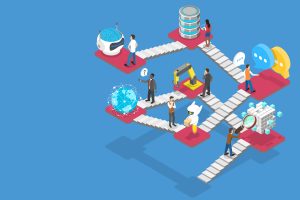How can SaaS benefit businesses?

Credit: Emnify
The cloud may pose a number of questions but SaaS (Software as a Service) can provide an affordable, efficient solution tailored to a business.
The growth of the cloud has led to so much innovation in technology. Decentralised architectures have revolutionised the way we use computers, with the edge set to evolve cloud computing even further.
However, Software as a Service (SaaS) is by its nature, centralised. It doesn’t exist separately on individual computers but in the great, abstract cloud. Updates that are made are made to everyone. There’s less chance of piracy and there’s scalability depending on the product.
The cloud is not without its critics, though. What happens if a server goes down? How tight is cloud security exactly? A lot of people worry about the connectivity, performance and general lack of control that SaaS offers. Cloud-based software requires a lot of faith.
It can reap huge benefits though. There are plenty of dynamic, efficient SaaS solutions on the market, however; SaaS may be viewed as risky but that can largely depend on the supplier.
SaaS offers many advantages
Software as a Service can give a business access to the latest technology at a much lower cost. Subscription models have revolutionised the way that customers receive high-quality services, from Netflix to Creative Cloud.
Riverbed is one example of a company that offers fast and flexible SaaS. The company boasts that it can provide accelerated SaaS performance up to 33 times faster, just by mitigating latency and reducing the bandwidth of up to 99%. The company also offers a Digital Experience Management (DEM) platform, which can give a business performance measurement of leading enterprise SaaS applications, including Microsoft Office 365, Salesforce, ServiceNow, Box and more.
An easy-to-deploy service is a must when it comes to SaaS. It can be hard to gauge exactly how each user finds SaaS applications, however, the more user-friendly, speedy and efficient the service is, the easier it is to overcome limitations of latency and network congestion, among other things.
Without SaaS, it’s quite possible for you to focus too much of your business around the costs of software
“We live in a digital world where technology is redefining what’s possible,” Riverbed says. “But, it’s vital that we remember that the purpose of technology is to advance the human experience, not the other way around. Because the real impact of digital innovation isn’t measured by volume and velocity, or only dollars and cents. It’s measured by the human experience.”
Software as a Service doesn’t have to be installed by the IT guy, individually on every single computer in the office. You don’t need to buy an individual copy for everyone that needs it. You don’t need to worry about the cost of a software package that will no doubt become obsolete in a year or less.
Without SaaS, it’s quite possible for you to focus too much of your business around the costs of software; imagine, for example, that you have to factor in software costs when working out how many people to include in your team.
That’s perhaps the biggest benefit of SaaS: essentially, it’s very freeing for a company as it enables you to focus efforts in other places.
What is the future of SaaS?
“The future of SaaS will be defined by doing more with less,” says Chris Makkreel, the Head of Technology at Salesforce. “Today, technology is proactive but tomorrow technology will be predictive. Interestingly, 90% of all data has been generated in the past two years.”
This is essentially where SaaS is heading. It made sense, in the long run, to move from a machine-based software package to software that would react to updates; just as machine learning learns from its data to become stronger and wiser.
Software as a Service is not going anywhere. With the continued upward trajectory of edge computing, it seems certain that more software will become centralised and decentralised in different senses.
SaaS will no doubt outlive the cloud. It offers incredible control and efficiency, and it can do so at a good cost.
